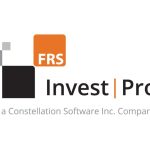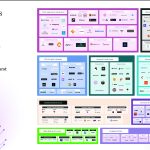
Nexus International’s $546M H1 Performance Highlights Revenue Density Strategy
Nexus International’s rise into the global Top 100 iGaming companies in 2025 is more than a story of rapid growth. It is a case study in how precise revenue concentration can dictate infrastructure and market decisions. With $546 million in H1 2025 revenue, the company’s performance reflects more than a broad-based push across dozens of jurisdictions. Instead, its growth has been driven by outsized returns from a select group of high-performing markets, with Latin America, and particularly Brazil, standing out as a core revenue engine.
This density of earnings in specific geographies has shaped Nexus’s operational map. Rather than adopting the industry’s common model of wide market diversification, spreading resources thinly across multiple regions, Nexus has concentrated investment where data shows the most traction. The choice to establish its global headquarters in São Paulo is a direct result of this approach. The location is not a symbolic presence in a major financial hub, but a strategic positioning inside the company’s strongest market, where user activity, transaction volumes, and brand engagement are highest.
For Nexus, the logic is straightforward: infrastructure should serve the markets that already prove their ability to generate sustained revenue. The São Paulo headquarters is designed to accelerate this loop. With leadership, compliance, and product teams embedded where the business is most active, Nexus can iterate faster on localised offerings, fine-tune marketing based on live user feedback, and adapt to regulatory changes without the lag of remote coordination.
This focus on revenue density stands in contrast to how many competitors operate. Larger iGaming companies often push for global footprint expansion in multiple markets simultaneously, sometimes prioritising presence over profitability. While such strategies can build brand recognition, they risk tying up resources in regions that may take years to reach profitability. Nexus’s approach reduces that risk. By deepening its presence in proven markets before moving into new ones, the company maximises the return on operational spending while avoiding the inefficiencies that come with thinly spread teams.
The absence of external investors has further reinforced this model. Without shareholder demands for rapid geographic expansion, Nexus retains full control over its pace of growth. Decisions such as opening the São Paulo HQ are made based on internal performance metrics, not quarterly investor presentations. This independence allows Nexus to act when the numbers justify it, ensuring that operational investments are consistently backed by real revenue performance.
In practice, this revenue-driven decision-making also improves the company’s ability to forecast and manage resources. Concentrated earnings give Nexus a clearer picture of market cycles, seasonal trends, and promotional effectiveness in its top regions. This clarity enables more accurate budgeting and staffing decisions, ensuring that expansions are well-supported rather than reactionary.
As Nexus looks beyond 2025, this disciplined approach is likely to remain a core part of its growth playbook. The company’s position in the Top 100 is not the result of a scattershot expansion strategy, but of deliberately building in markets that deliver measurable returns. The São Paulo headquarters is both a reflection of where Nexus is strongest today and a platform for scaling further in regions that meet the same high-performance criteria.
By prioritising revenue density over blanket market coverage, Nexus International has created a framework where every major operational move, from headquarters location to hiring strategy, is anchored in proven profitability. In an industry where chasing every emerging market is often seen as the default path, Nexus’s model offers an alternative: scale where you’re already winning, and let the numbers dictate the next move.















